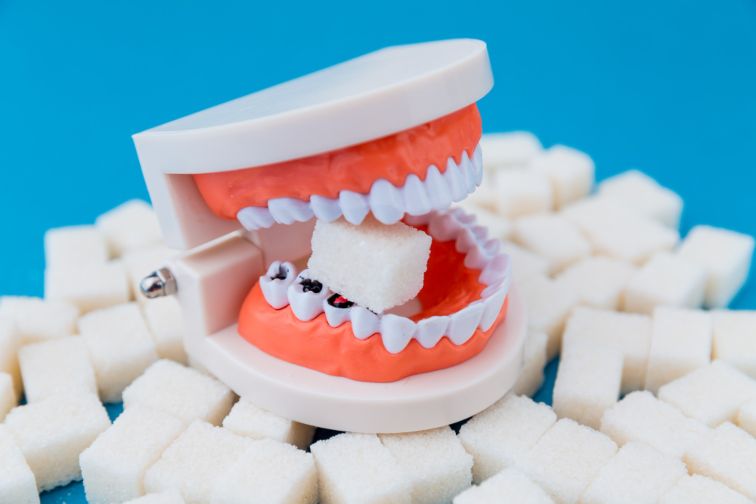Every person who has been at the dentist’s office at least once, has been introduced to the concept of dental crowns. However, not many people have encountered temporary crowns. What is it exactly and how does it work?
To put it plainly, a temporary crown is a tooth-shaped cap that protects a natural tooth or implant until the patient’s permanent crown can be made and placed on the damaged tooth. Unlike permanent crowns, temporary crowns are very fragile and delicate. This means it’s important to take extra care of them. Patients with temporary crowns should be very gentle with their teeth. This is especially true when flossing or chewing.
Patients who had never had a temporary crown should inform themselves thoroughly about this dental crown treatment. This is the only way to ensure that the temporary crown doesn’t crack or come loose before it’s replaced with a permanent one. Here is the most important information regarding this topic.

A dentist will put a temporary crown on a patient’s tooth when he or she sees that a natural tooth requires a traditional permanent crown. This may sound a bit confusing, but due to the fact that a dentist needs a few weeks to make a permanent crown, they usually put a temporary crown in place until the permanent one is ready. This is the best way to ensure that the tooth won’t suffer any more damage before the permanent crown is cemented into place. When is the temporary crown necessary?
Here are some of the examples:
The temporary crown can be used for any single tooth, or it can be a bridge over more implants and teeth.
There are some dental offices that have the necessary technology to create a permanent crown in one day, but most dentists require a week or two to manufacture a crown. This is the main reason why temporary crowns are used in dentistry today.
This depends only on what a dentist says. Usually, dentists need a few weeks to create a permanent crown. Therefore, the patients have to keep a temporary crown in place for 2 to 3 weeks.
Also, patients have to wear the temporary crown during the dental work a dentist has to do on a specific tooth.
When it comes to implants, for example, the bone may require a few weeks to few months to heal, and only then can a permanent crown be placed over them. This means that patients with temporary crowns have to arm themselves with patience.
This is perfectly normal and it can happen to anybody. However, the only right thing for a patient to do in this situation is to call their dentist and schedule an appointment. This will allow the dentist to reglue the temporary crown and prevent any damage to the tooth.
It’s important for a patient to call the dentist as soon as possible, because leaving the space in the mouth empty can expose the tooth and gum underneath the crown. This can cause damage or infection.
Patients who have a temporary crown should know that they will have to care for it with a little bit of extra care. What does this mean exactly?
People have to be careful while flossing and brushing temporary crown, so as not to dislodge it. The best way to clean it is to slide the floss gently in and out. Brushing the area more gently is also recommended.
It’s very important for a patient to keep the area around the temporary crown clean.

The temporary crown is glued in with temporary cement. Most dentists claim that it’s fully functional and this means patients can chew normally. However, considering that this is not a permanent crown, patients should avoid chewing on hard, tough, or sticky foods.
Avoiding sugary foods is also recommended. The sugar can find its way between the crown and the gum line and this might cause decay. This should be prevented at all costs.
Here are the foods people with temporary crowns should avoid:
A lot of patients have the same question - can you drink alcohol with a temporary crown? The answer is yes, but the patients should try to avoid very hot or very cold foods and drinks. They should also avoid foods that are generally bad for teeth.
Besides being careful what they eat, patients should also pay attention to how they eat. For example, they should never bit too hard on food, especially if they are eating crunchy bread, fresh vegetables, or nuts.
Most patients want to know how to care for temporary crown. The answer is pretty simple. They have to be careful what they eat and how they eat. But also, they shouldn’t neglect dental hygiene. Flossing and brushing the temporary crown will keep it in place and it will reduce the risk of infection.

